2 The Culture Concept
“The Culture Concept”
from
Perspectives: An Open Introduction to Cultural Anthropology, 2nd Edition
Priscilla Mederios (priscilla.mederios@wchopsital.ca) and Emily Cowall (cowallee@mcmaster.ca)
STORIES AS A REFLECTION ON CULTURE
Stories are told in every culture and often teach a moral lesson to young children. Fables are similar, but often set an example for people to live by or describe what to do when in a dangerous situation. They can also be a part of traditions, help to preserve ways of life, or explain mysteries. Storytelling takes many different forms such as tall tales and folktales. These are for entertainment or to discuss problems encountered in life. Both are also a form of cultural preservation, a way to communicate morals or values to the next generation. Stories can also be a form of social control over certain activities or customs that are not allowed in a society.
A fable becomes a tradition by being retold and accepted by others in the community. Different cultures have very similar stories sharing common themes. One of the most common themes is the battle between good and evil. Another is the story of the quest. The quest often takes the character to distant lands, filled with real-life situations, opportunities, hardships, and heartaches. In both of these types of stories, the reader is introduced to the anthropological concept known as the Other. What exactly is the Other? The Other is a term that has been used to describe people whose customs, beliefs, or behaviors are “different” from one’s own.

Can a story explain the concept of the Other? Jonathan Swift’s Gulliver’s Travels is about four different voyages that Gulliver undertakes. His first adventure is the most well-known; in the story, Lemuel Gulliver is a surgeon who plans a sea voyage when his business fails. During a storm at sea, he is shipwrecked, and he awakens to find himself bound and secured by a group of captors—the Lilliputians—who are six inches tall. Gulliver, having what Europeans consider a normal body height, suddenly becomes a giant. During this adventure, Gulliver is seen as an outsider, a stranger with different features and language. Gulliver becomes the Other.
What lessons about culture can we learn from Gulliver’s Travels? Swift’s story offers lessons about cultural differences, conflicts occurring in human society, and the balance of power. It also provides an important example of the Other. The Other is a matter of perspective in this story: Gulliver thinks the Lilliputians are strange and unusual. To Gulliver, the Lilliputians are the Other, but the Lilliputians equally see Gulliver as the Other—he is their captive and is a rare species of man because of his size.
The themes in Gulliver’s Travels describe different cultures and aspects of storytelling. The story uses language, customary behaviors, and the conflict between different groups to explore ideas of the exotic and strange. The story is framed as an adventure, but is really about how similar cultures can be. In the end, Gulliver becomes a member of another cultural group, learning new norms, attitudes, and behaviors. At the same time, he wants to colonize them, a reflection of his former cultural self.
Stories are an important part of culture, and when used to pass on traditions or cultural values, they can connect people to the past. Stories are also a way to validate religious, social, political, and economic practices from one generation to another. Stories are important because they are used in some societies to apply social pressure, to keep people in line, and are part of shaping the way that people think and behave.
Anthropologists as Storytellers
People throughout recorded history have relied on storytelling as a way to share cultural details. When early anthropologists studied people from other civilizations, they relied on the written accounts and opinions of others; they presented facts and developed their “stories,” about other cultures based solely on information gathered by others. These scholars did not have any direct contact with the people they were studying. This approach has come to be known as armchair anthropology. Simply put, if a culture is viewed from a distance (as from an armchair), the anthropologist tends to measure that culture from his or her own vantage point and to draw comparisons that place the anthropologist’s culture as superior to the one being studied. This point of view is also called ethnocentrism. Ethnocentrism is an attitude based on the idea that one’s own group or culture is better than any other.
Early anthropological studies often presented a biased ethnocentric interpretation of the human condition. For example, ideas about racial superiority emerged as a result of studying the cultures that were encountered during the colonial era. During the colonial era from the sixteenth century to the mid–twentieth century, European countries (Britain, France, Germany, Belgium, Dutch Republic, Spain, Portugal) asserted control over land (Asia, Africa, the Americas) and people. European ideas of wrong and right were used as a measuring stick to judge the way that people in different cultures lived. These other cultures were considered primitive, which was an ethnocentric term for people who were non-European. It is also a negative term suggesting that indigenous cultures had a lack of technological advancement. Colonizers thought that they were superior to the Other in every way.
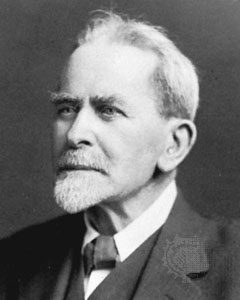
Armchair anthropologists were unlikely to be aware of their ethnocentric ideas because they did not visit the cultures they studied. Scottish social anthropologist Sir James Frazer is well-known for his 1890 work The Golden Bough: A Study of Comparative Religions. Its title was later changed to A Study in Magic and Religion, and it was one of the first books to describe and record magical and religious beliefs of different culture groups around the world. Yet, this book was not the outcome of extensive study in the field. Instead, Frazer relied on the accounts of others who had traveled, such as scholars, missionaries, and government officials, to formulate his study.
Another example of anthropological writing without the use of fieldwork is Sir E. B. Tylor’s 1871 work Primitive Culture. Tylor, who went on to become the first professor of anthropology at Oxford University in 1896, was an important influence in the development of sociocultural anthropology as a separate discipline. Tylor defined culture as “that complex whole which includes knowledge, belief, art, law, morals, custom, and any other capabilities and habits acquired by man as a member of society.”[1] His definition of culture is still used frequently today and remains the foundation to the culture concept in anthropology.
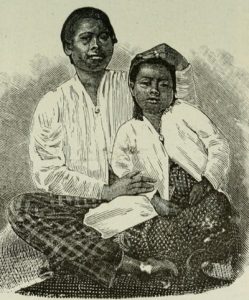
Tylor’s definition of culture was influenced by the popular theories and philosophies of his time, including the work of Charles Darwin. Darwin formulated the theory of evolution by natural selection in his 1859 book On the Origin of Species. Scholars of the time period, including Tylor, believed that cultures were subject to evolution just like plants and animals and thought that cultures developed over time from simple to complex. Many nineteenth century anthropologists believed that cultures evolved through distinct stages. They labeled these stages with terms such as savagery, barbarism, and civilization.[2] These theories of cultural evolutionism would later be successfully refuted, but conflicting views about cultural evolutionism in the nineteenth century highlight an ongoing nature versus nurture debate about whether biology shapes behavior more than culture.
Both Frazer and Tylor contributed important and foundational studies even though they never went into the field to gather their information. Armchair anthropologists were important in the development of anthropology as a discipline in the late nineteenth century because although these early scholars were not directly experiencing the cultures they were studying, their work did ask important questions—questions that could ultimately only be answered by going into the field.
Anthropologists as Cultural Participants
The armchair approach as a way to study culture changed when scholars such as Bronislaw Malinowski, Alfred Radcliffe-Brown, Franz Boas, and Margaret Mead took to the field and studied by being participants and observers. As they did, fieldwork became the most important tool anthropologists used to understand the “complex whole” of culture.
Bronislaw Malinowski, a Polish anthropologist, was greatly influenced by the work of Frazer. However, unlike the armchair anthropology approach Frazer used in writing The Golden Bough, Malinowski used more innovative ethnographic techniques, and his fieldwork took him off the veranda to study different cultures. The off the veranda approach is different from armchair anthropology because it includes active participant observation: traveling to a location, living among people, and observing their day-to-day lives.
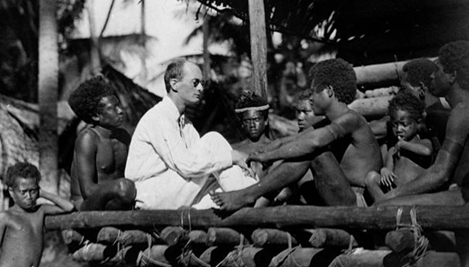
What happened when Malinowski came off the veranda? The Argonauts of the Western Pacific (1922) was considered the first modern ethnography and redefined the approach to fieldwork. This book is part of Malinowski’s trilogy on the Trobriand Islanders. Malinowski lived with them and observed life in their villages. By living among the islanders, Malinowski was able to learn about their social life, food and shelter, sexual behaviors, community economics, patterns of kinship and family.[3]
During his fieldwork with the Trobriand Islanders, Malinowski worked to integrate himself into their cultural group. Anthropologists coming off the veranda began to became personally involved with the locals during the course of their fieldwork: taking leadership positions and assuming key roles in society; entering into a marriage or spousal contract; exploring sexuality or fully participating in rituals. In The Argonauts of the Western Pacific, Malinowski suggested that other anthropologists should “grasp the native’s point of view, his relations to life, to realize his vision of his world.”[4] However, as we will see later in this chapter, Malinowski’s practice of integration presented problems from an ethical point of view. Participant-observation is a method to gather ethnographic data, but the building of personal relationships required by this method places both the anthropologist and the culture group at risk by blurring the lines on both sides of the relationship.
THE DEVELOPMENT OF THEORIES OF CULTURE
Anthropology in Europe
The discipline of cultural anthropology developed somewhat differently in Europe and North America, in particular in the United States, during the nineteenth and early twentieth centuries with each region contributing new dimensions to the concept of culture. Many European anthropologists were particularly interested in questions about how societies were structured and how they remained stable over time. This highlighted emerging recognition that culture and society are not the same. Culture had been defined by Tylor as knowledge, beliefs, and customs, but a society is more than just shared ideas or habits. In every society, people are linked to one another through social institutions such as families, political organizations, and businesses. Anthropologists across Europe often focused their research on understanding the form and function of these social institutions.
European anthropologists developed theories of functionalism to explain how social institutions contribute to the organization of society and the maintenance of social order. Bronislaw Malinowski believed that cultural traditions were developed as a response to specific human needs such as food, comfort, safety, knowledge, reproduction, and economic livelihood. One function of educational institutions like schools, for instance, is to provide knowledge that prepares people to obtain jobs and make contributions to society. Although he preferred the term structural-functionalism, the British anthropologist A.R. Radcliffe-Brown was also interested in the way that social structures functioned to maintain social stability in a society over time.[5] He suggested that in many societies it was the family that served as the most important social structure because family relationships determined much about an individual’s social, political, and economic relationships and these patterns were repeated from one generation to the next. In a family unit in which the father is the breadwinner and the mother stays home to raise the children, the social and economic roles of both the husband and the wife will be largely defined by their specific responsibilities within the family. If their children grow up to follow the same arrangement, these social roles will be continued in the next generation.
In the twentieth century, functionalist approaches also became popular in North American anthropology, but eventually fell out of favor. One of the biggest critiques of functionalism is that it views cultures as stable and orderly and ignores or cannot explain social change. Functionalism also struggles to explain why a society develops one particular kind of social institution instead of another. Functionalist perspectives did contribute to the development of more sophisticated concepts of culture by establishing the importance of social institutions in holding societies together. While defining the division between what is cultural and what is social continues to be complex, functionalist theory helped to develop the concept of culture by demonstrating that culture is not just set of ideas or beliefs, but consists of specific practices and social institutions that give structure to daily life and allow human communities to function.
Anthropology in the United States
During the development of anthropology in North America (Canada, United States, and Mexico), the significant contribution made by the American School of Anthropology in the nineteenth and twentieth centuries was the concept of cultural relativism, which is the idea that cultures cannot be objectively understood since all humans see the world through the lens of their own culture. Cultural relativism is different than ethnocentrism because it emphasizes understanding culture from an insider’s view. The focus on culture, along with the idea of cultural relativism, distinguished cultural anthropology in the United States from social anthropology in Europe.
The participant-observation method of fieldwork was a revolutionary change to the practice of anthropology, but at the same time it presented problems that needed to be overcome. The challenge was to move away from ethnocentrism, race stereotypes, and colonial attitudes, and to move forward by encouraging anthropologists to maintain high ethical standards and open minds.
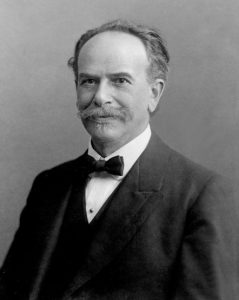
Franz Boas, an American anthropologist, is acknowledged for redirecting American anthropologists away from cultural evolutionism and toward cultural relativism. Boas first studied physical science at the University of Kiel in Germany. Because he was a trained scientist, he was familiar with using empirical methods as a way to study a subject. Empirical methods are based on evidence that can be tested using observation and experiment.
In 1883, Franz Boas went on a geographical expedition to Baffin Island in the Canadian Arctic. The Central Eskimo (1888) details his time spent on Baffin Island studying the culture and language of the central Inuit people. He studied every aspect of their culture such as tools, clothing, and shelters. This study was Boas’ first major contribution to the American school of anthropology and convinced him that cultures could only be understood through extensive field research. As he observed on Baffin Island, cultural ideas and practices are shaped through interactions with the natural environment. The cultural traditions of the Inuit were suited for the environment in which they lived. This work led him to promote cultural relativism: the principle that a culture must be understood on its own terms rather than compared to an outsider’s standard. This was an important turning point in correcting the challenge of ethnocentrism in ethnographic fieldwork.[6]
Boas is often considered the originator of American anthropology because he trained the first generation of American anthropologists including Ruth Benedict, Margaret Mead, and Alfred Kroeber. Using a commitment to cultural relativism as a starting point, these students continued to refine the concept of culture. Ruth Benedict, one of Boas’ first female students, used cultural relativism as a starting point for investigating the cultures of the American northwest and southwest. Her best-selling book Patterns of Culture (1934) emphasized that culture gives people coherent patterns for thinking and behaving. She argued that culture affects individuals psychologically, shaping individual personality traits and leading the members of a culture to exhibit similar traits such as tendency toward aggression, or calmness.
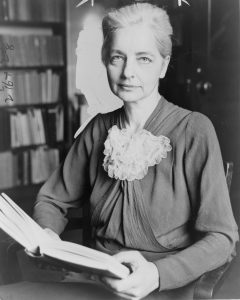
Benedict was a professor at Columbia University and in turn greatly influenced her student Margaret Mead, who went on to become one of the most well-known female American cultural anthropologists. Mead was a pioneer in conducting ethnographic research at a time when the discipline was predominately male. Her 1925 research on adolescent girls on the island of Ta‘ū in the Samoan Islands, published as Coming of Age in Samoa (1928), revealed that teenagers in Samoa did not experience the same stress and emotional difficulties as those in the United States. The book was an important contribution to the nature versus nurture debate, providing an argument that learned cultural roles were more important than biology. The book also reinforced the idea that individual emotions and personality traits are products of culture.
Alfred Louis Kroeber, another student of Boas, also shared the commitment to field research and cultural relativism, but Kroeber was particularly interested in how cultures change over time and influence one another. Through publications like The Nature of Culture (1952), Kroeber examined the historical processes that led cultures to emerge as distinct configurations as well as the way cultures could become more similar through the spread or diffusion of cultural traits. Kroeber was also interested in language and the role it plays in transmitting culture. He devoted much of his career to studying Native American languages in an attempt to document these languages before they disappeared.
Anthropologists in the United States have used cultural relativism to add depth to the concept of culture in several ways. Tylor had defined culture as including knowledge, belief, art, law, morals, custom, capabilities and habits. Boas and his students added to this definition by emphasizing the importance of enculturation, the process of learning culture, in the lives of individuals. Benedict, Mead, and others established that through enculturation culture shapes individual identity, self-awareness, and emotions in fundamental ways. They also emphasized the need for holism, approaches to research that considered the entire context of a society including its history.
Kroeber and others also established the importance of language as an element of culture and documented the ways in which language was used to communicate complex ideas. By the late twentieth century, new approaches to symbolic anthropology put language at the center of analysis. Later on, Clifford Geertz, the founding member of postmodernist anthropology, noted in his book The Interpretation of Cultures (1973) that culture should not be seen as something that was “locked inside people’s heads.” Instead, culture was publicly communicated through speech and other behaviors. Culture, he concluded, is “an historically transmitted pattern of meanings embodied in symbols, a system of inherited conceptions expressed in symbolic forms by means of which men communicate, perpetuate, and develop their knowledge about and their attitudes toward life.”[7] This definition, which continues to be influential today, reflects the influence of many earlier efforts to refine the concept of culture in American anthropology.
Ethical Issues in Truth Telling
As anthropologists developed more sophisticated concepts of culture, they also gained a greater understanding of the ethical challenges associated with anthropological research. Because participant-observation fieldwork brings anthropologists into close relationships with the people they study, many complicated issues can arise. Cultural relativism is a perspective that encourages anthropologists to show respect to members of other cultures, but it was not until after World War II that the profession of anthropology recognized a need to develop formal standards of professional conduct.
The Nuremberg trials, which began in 1945 in Nuremberg, Germany and were conducted under the direction of the France, the Soviet Union, the United Kingdom, and the United States, prosecuted members of the Nazi regime for war crimes. In addition to military and political figures, physicians and scientists were also prosecuted for unethical human experimentation and mass murder. The trials demonstrated that physicians and other scientists could be dangerous if they used their skills for abusive or exploitative goals. The Nuremberg Code that emerged from the trials is considered a landmark document in medical and research ethics. It established principles for the ethical treatment of the human subjects involved in any medical or scientific research.
Many universities adopted principles from the Nuremberg Code to write ethical guidelines for the treatment of human subjects. Anthropologists and students who work in universities where these guidelines exist are obliged to follow these rules. The American Anthropological Association (AAA), along with many anthropology organizations in other countries, developed codes of ethics describing specific expectations for anthropologists engaged in research in a variety of settings. The principles in the AAA code of ethics include: do no harm; be open and honest regarding your work; obtain informed consent and necessary permissions; ensure the vulnerable populations in every study are protected from competing ethical obligations; make your results accessible; protect and preserve your records; and maintain respectful and ethical professional relationships. These principles sound simple, but can be complicated in practice.
Bronislaw Malinowski
The career of Bronislaw Malinowski provides an example of how investigations of culture can lead anthropologists into difficult ethical areas. As discussed above, Malinowski is widely regarded as a leading figure in the history of anthropology. He initiated the practice of participant-observation fieldwork and published several highly regarded books including The Argonauts of the Western Pacific. Following his death, the private diary he kept while conducting fieldwork was discovered and published as A Diary in the Strictest Sense of the Term (1967). The diary described Malinowski’s feelings of loneliness and isolation, but also included a great deal of information about his sexual fantasies as well his some insensitive and contemptuous opinions about the Trobriand Islanders. The diary provided valuable insight into the mind of an important ethnographer, but also raised questions about the extent to which his personal feelings, including bias and racism, were reflected in his official conclusions.
Most anthropologists keep diaries or daily notes as a means of keeping track of the research project, but these records are almost never made public. Because Malinowski’s diary was published after his death, he could not explain why he wrote what he did, or assess the extent to which he was able to separate the personal from the professional. Which of these books best reflects the truth about Malinowski’s interaction with the Trobriand Islanders? This rare insight into the private life of a field researcher demonstrates that even when anthropologists are acting within the boundaries of professional ethics, they still struggle to set aside their own ethnocentric attitudes and prejudices.
Napoleon Chagnon
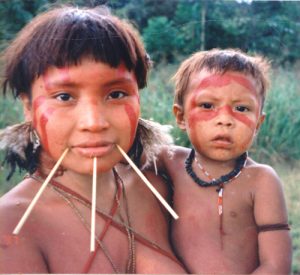
A more serious and complicated incident concerned research conducted among the Yanomami, an indigenous group living in the Amazon rainforest in Brazil and Venezuela. Starting in the 1960s, the anthropologist Napoleon Chagnon and James Neel, a geneticist, carried out research among the Yanomami. Neel was interested in studying the effects of radiation released by nuclear explosions on people living in remote areas. Chagnon was investigating theories about the role of violence in Yanomami society. In 2000, an American journalist, Patrick Tierney, published a book about Chagnon and Neel’s research: Darkness in El Dorado: How Scientists and Journalists Devastated the Amazon. The book contained numerous stunning allegations, including a claim that the pair had deliberately infected the Yanomami with measles, starting an epidemic that killed thousands of people. The book also claimed that Neel had conducted medical experiments without the consent of the Yanomami and that Chagnon had deliberately created conflicts between Yanomami groups so he could study the resulting violence.
These allegations were brought to the attention of the American Anthropological Association, and a number of inquiries were eventually conducted. James Neel was deceased, but Napoleon Chagnon steadfastly denied the allegations. In 2002, the AAA issued their report; Chagnon was judged to have misrepresented the violent nature of Yanomami culture in ways that caused them harm and to have failed to obtain proper consent for his research. However, Chagnon continued to reject these conclusions and complained that the process used to evaluate the evidence was unfair. In 2005, the AAA rescinded its own conclusion, citing problems with the investigation process. The results of several years of inquiry into the situation satisfied few people. Chagnon was not definitively pronounced guilty, nor was he exonerated. Years later, debate over this episode continues.[8] The controversy demonstrates the extent to which truth can be elusive in anthropological inquiry. Although anthropologists should not be storytellers in the sense that they deliberately create fictions, differences in perspective and theoretical orientation create unavoidable differences in the way anthropologists interpret the same situation. Anthropologists must try to use their toolkit of theory and methods to ensure that the stories they tell are truthful and represent the voice of the people being studied using an ethical approach.
Our Final Reflection
Clearly, the culture concept does not follow a straight line. Scholars, storytellers, and the people one meets in everyday life have something to say about the components of culture. The story that emerges from different voices brings insight into what it is to be human. Defining the culture concept is like putting together a puzzle with many pieces. The puzzle of culture concepts is almost complete, but it is not finished…yet.

